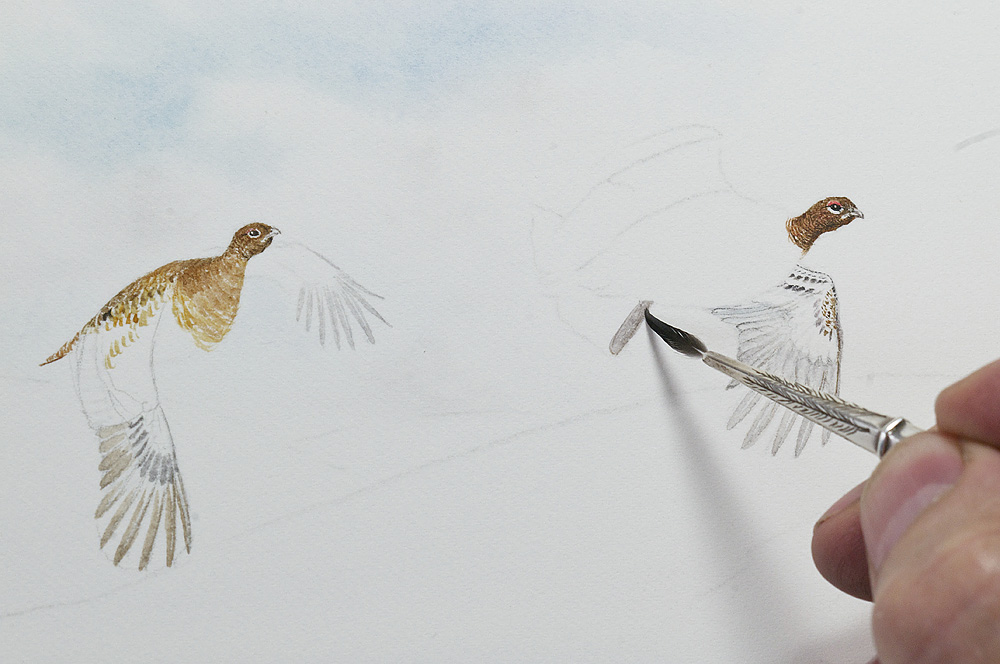
Pin-feather painting – a new level

Earlier this year, Colin set himself the almost impossible task of painting most (or all) of Britain’s game birds with their respective pin-feathers.
This is the first tantalising glimpse of his work in progress! Two red grouse are already winging their way almost out of the picture, their alert expressions and spread wings bringing them immediately to life. This is just the beginning, but you can see that the picture is showing great promise.
As many of you will already know, Colin has taken woodcock pin-feather painting to new heights already, stretching the capabilities of these tiny feathers to the limits in his quest to achieve detailed plumage, beautiful woodland landscapes and softly graduating skies.
Colin is never one to rest on his laurels, but this latest challenge is a huge risk, not only because he will be using ‘unknown’ feathers of all the game birds, most of which he hasn’t tried before… but also because he is painting then on one sheet of paper. Theoretically, if one image goes wrong, the whole picture may be ruined. In all his years as a professional artist, Colin has only thrown away one piece that he had started, because the paper was damaged. Let’s hope his luck holds for this one!
The picture, when complete, will comprise five studies of game birds, each created with their own pin-feather. Top left will be a red grouse, top right will be a black grouse, bottom left is a capercaillie, and bottom right a ptarmigan. A woodcock image will be in the centre.
Colin is often asked where he starts on a painting. The answer is usually ‘anywhere’, but in this case there was only one place to start: the most difficult part. He examined all the pin-feathers he had to use, and chose the one species that showed the least promise as a brush. If he could make that one work, then hopefully the others would follow too. This was the red grouse, and as you can see from the photo, the pin-feather is tiny. It is also extremely soft – in fact, Colin has found that it exhibits all the qualities that a woodcock’s pin-feather doesn’t have!
More information and examples of woodcock pin-feather painting can be found on Colin’s website. You can also read about his pin-feather painting technique in this earlier article on The Hazel Tree.
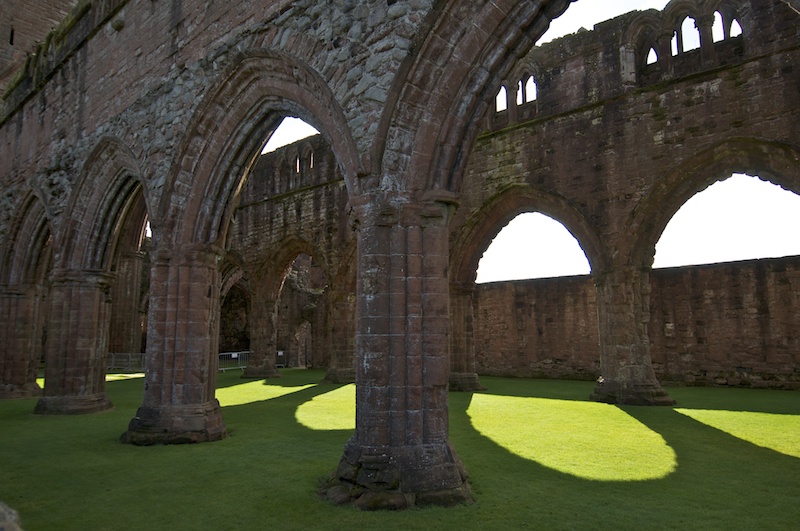
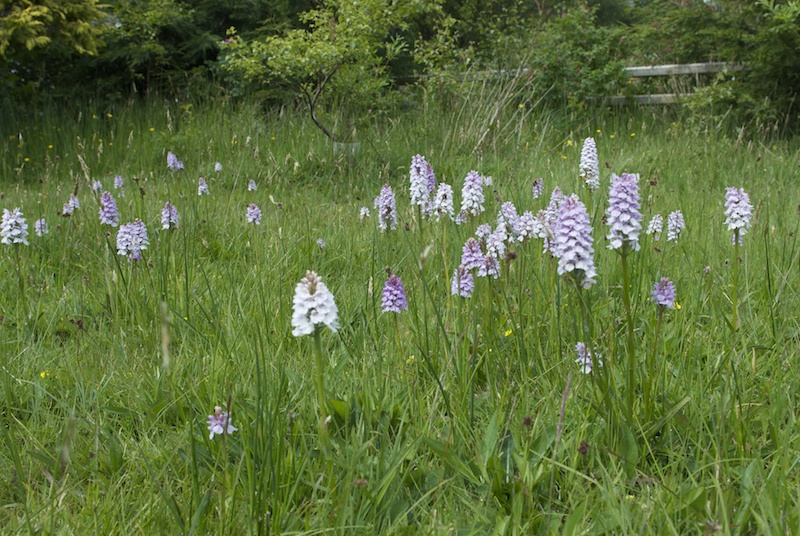

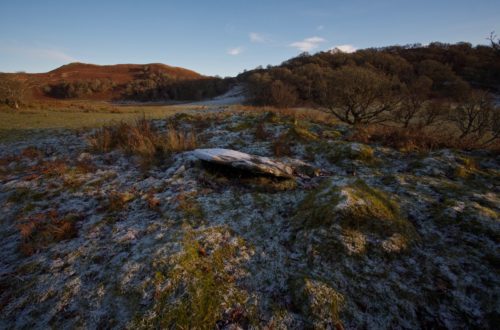
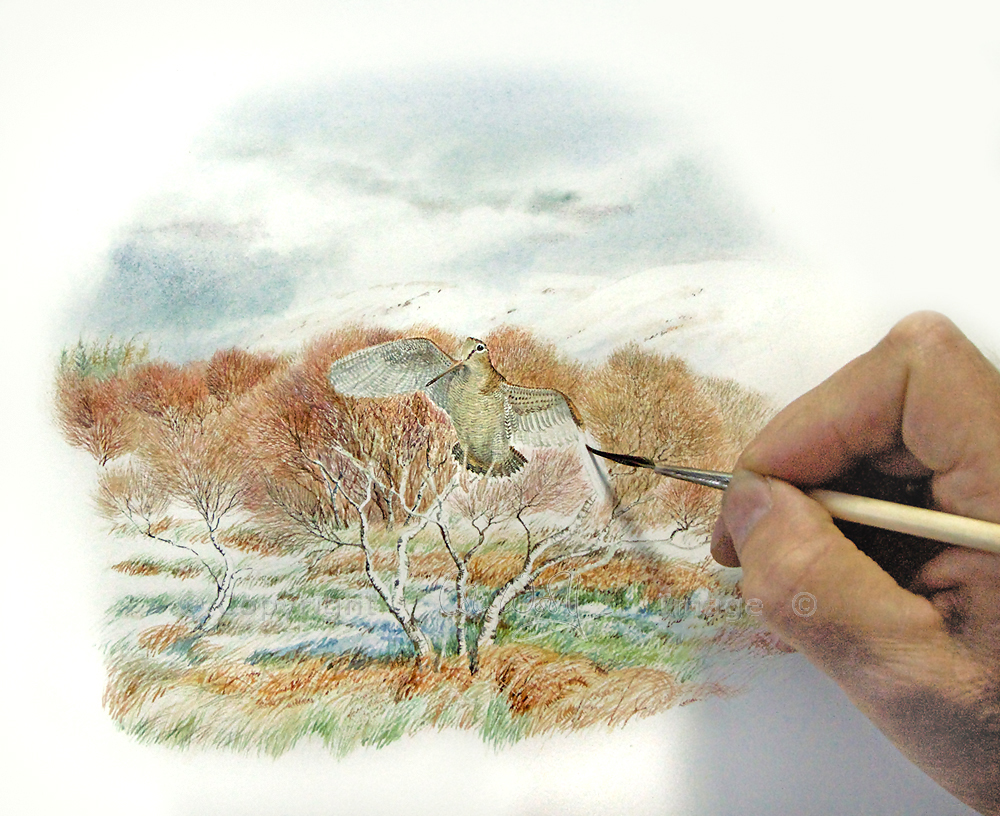

8 Comments
Cornel Apostol
Great painting. 🙂
Jo Woolf
Thank you, Cornel! I like it already.
tearoomdelights
Unbelievable! I’m almost in shock at the very idea of this, it’s completely astonishing. I just really do not understand how he does it, he’s an absolute magician. This is going to be an amazing painting, I’m sure, and I love what he’s done already. How did he even come up with the idea, and does he make the brushes himself? I’m in awe.
tearoomdelights
I’ve just looked at the link you mentioned to his website and I am even more flabbergasted at the tiny detail he masters. How?! Utterly incredible.
Jo Woolf
Colin thanks you very much for this and your previous comment! I don’t know how he does it either, and to be truthful nor does he. He certainly can’t physically see all the detail that he paints, and when you enlarge it on screen it is just incredible. He has a purpose-made ‘holder’ which will take the shaft of the feather, so he can hold it in the same way as a brush. As for the idea, it’s something that (I think) has never been done before, and it seemed the next step up from painting woodcock. All bird species have this tiny feather, one on each wing – although some are easier to use than others! It has taken quite a while to actually obtain the feathers, especially from birds such as black grouse. The red grouse are going well, so he is very optimistic about the others. I’ll post more images as it progresses.
ordinarygood
We humans love pushing boundaries don’t we? I find your comment that Colin can’t physically see all the detail that he paints adds a rich mystical, intuitive, spiritual aspect to his ventures.
Jo Woolf
Colin is always pushing boundaries, usually his own! We’re excited to see how the painting progresses.
ordinarygood
It appears to be working very well Jo.